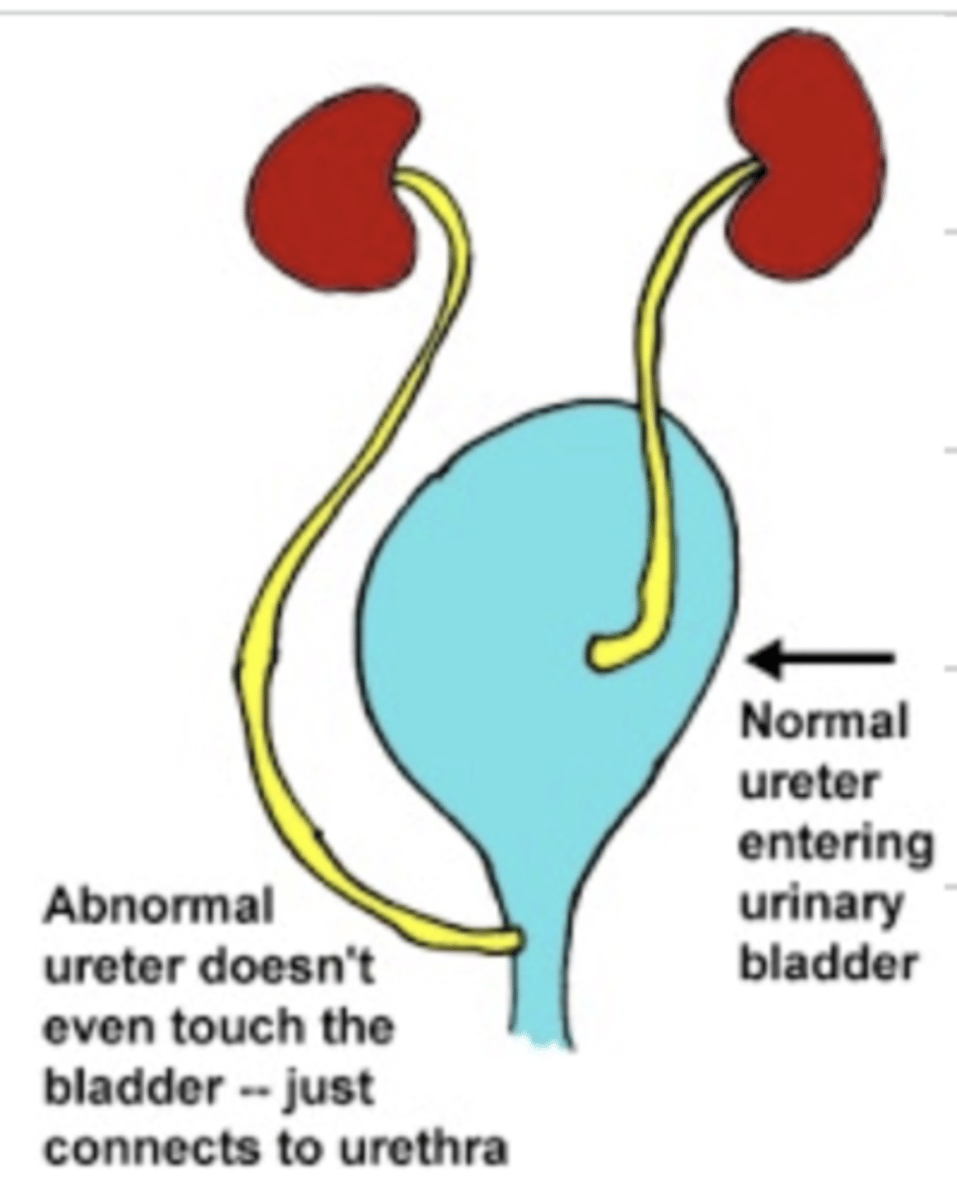GP- bladder and urethra
1/35
There's no tags or description
Looks like no tags are added yet.
Name | Mastery | Learn | Test | Matching | Spaced |
|---|
No study sessions yet.
36 Terms
what is LUTD?
lower urinary tract disease
it is a set of conditions affecting the bladder and urethra
-dysuria, stranguria
-polyuria, pollakiuria
-hematuria
-pyuria
-proteinuria
-periuria
-vesical tenesmus
-urinary incontinence
what lab results and clinical signs are consistent with LUTD (lower urinary tract disease)?
-dysuria, stranguria
-polyuria, pollakiuria
-hematuria
-pyuria
-proteinuria
-periuria
-vesical tenesmus
-urinary incontinence
what can cause LUTD?
many causes:
-infection (UTI)
-obstruction (uroliths, neoplasia)
-congenital abnormalities
-trauma causing rupture of the urinary tract
what is FLUTD?
feline urinary tract disease
it is a very common set of conditions affecting the bladder and urethra of cats.
female cats are more likely to suffer from what type of LUTD?
what about male cats?
female: sterile infections
male: urethral obstruction
which- female or male cats- are more susceptible to suffer from sterile infections of the urinary tract?
females
which sex of cat is more likely to have a urethral obstruction?
males- because their urethra is long and thin
is FLUTD common?
yes, very
what are the main causes of FLUTD?
UTI (10%)
obstructions (30%)
interstitial idiopathic cystitis (50%)
other- tumors, malformations, etc (10%)
★ stress! anything that causes a cat to stress can cause FLUTD
what etiology causes half of the FLUTD cases?
interstitial idiopathic cystitis
why does stress increase the chances of a cat developing FLUTD?
because stress ↑ levels of norepinephrine and catecholamines, which:
-↑ urothelium permeability
-activates inflammatory mechanisms
-allows the passage of substances through the urine, which activates nerve fibers (this causes pain, smooth muscle contraction, secondary edema, mast cell activation, etc)
what are the effects of norepinephrine and catecholamine release on the urinary system?
-↑ urothelium permeability
-activates inflammatory mechanisms
-allows the passage of substances through the urine, which activates nerve fibers (this causes pain, smooth muscle contraction, secondary edema, mast cell activation, etc)
★ these all can lead to LUTD (especially in cats- FLUTD)
what are glomerulations?
hematomas in the bladder lumen.
they are pathognomic for feline idiopathic cystitis.
what sign is pathognomic for feline idiopathic cystitis?
glomerulations- hematomas in the bladder lumen
what causes feline idiopathic cystitis?
stress.
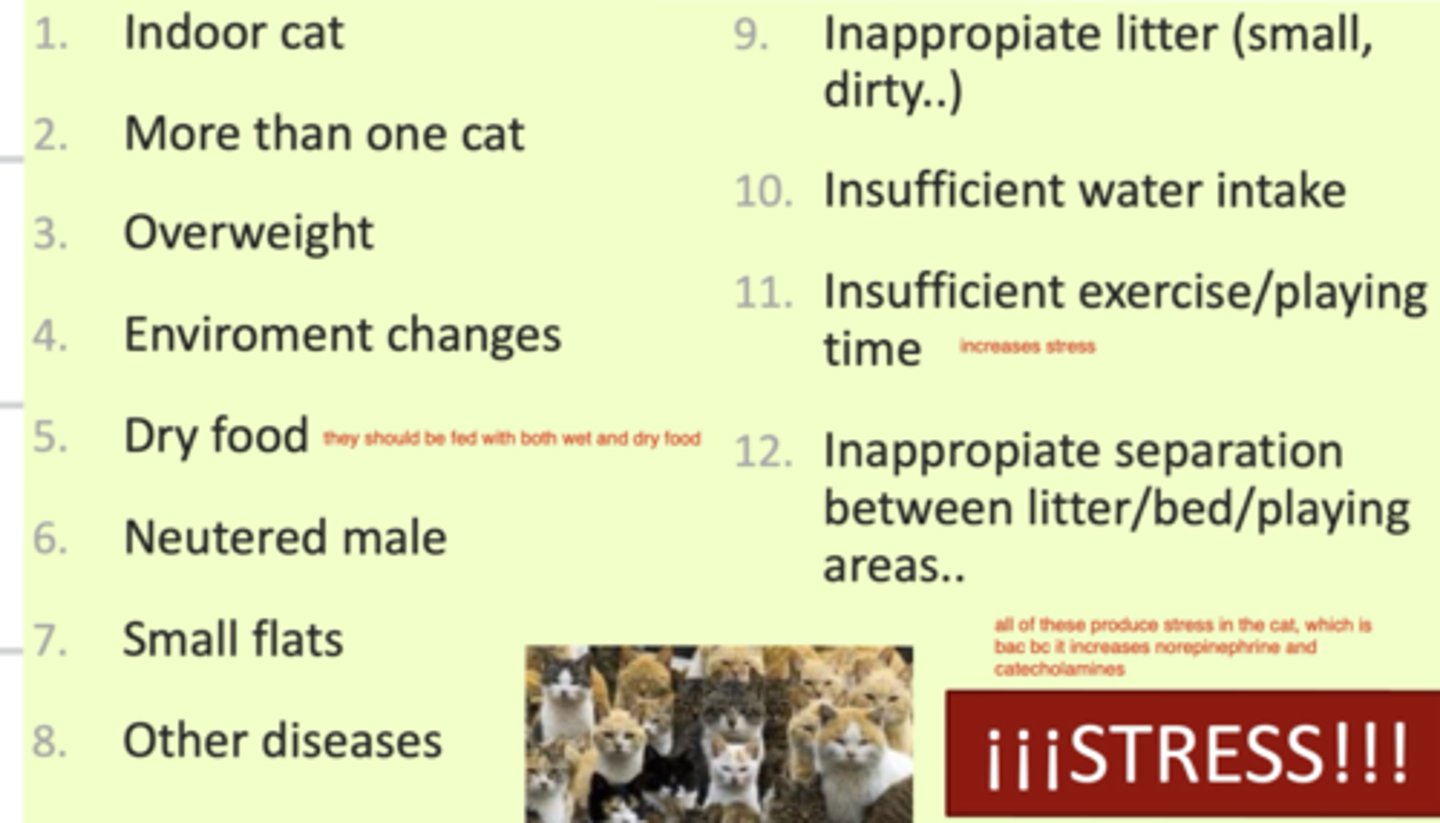
the cause of most cases of FLUTD is....
Feline Idiopathic Cystitis, mostly caused by stress
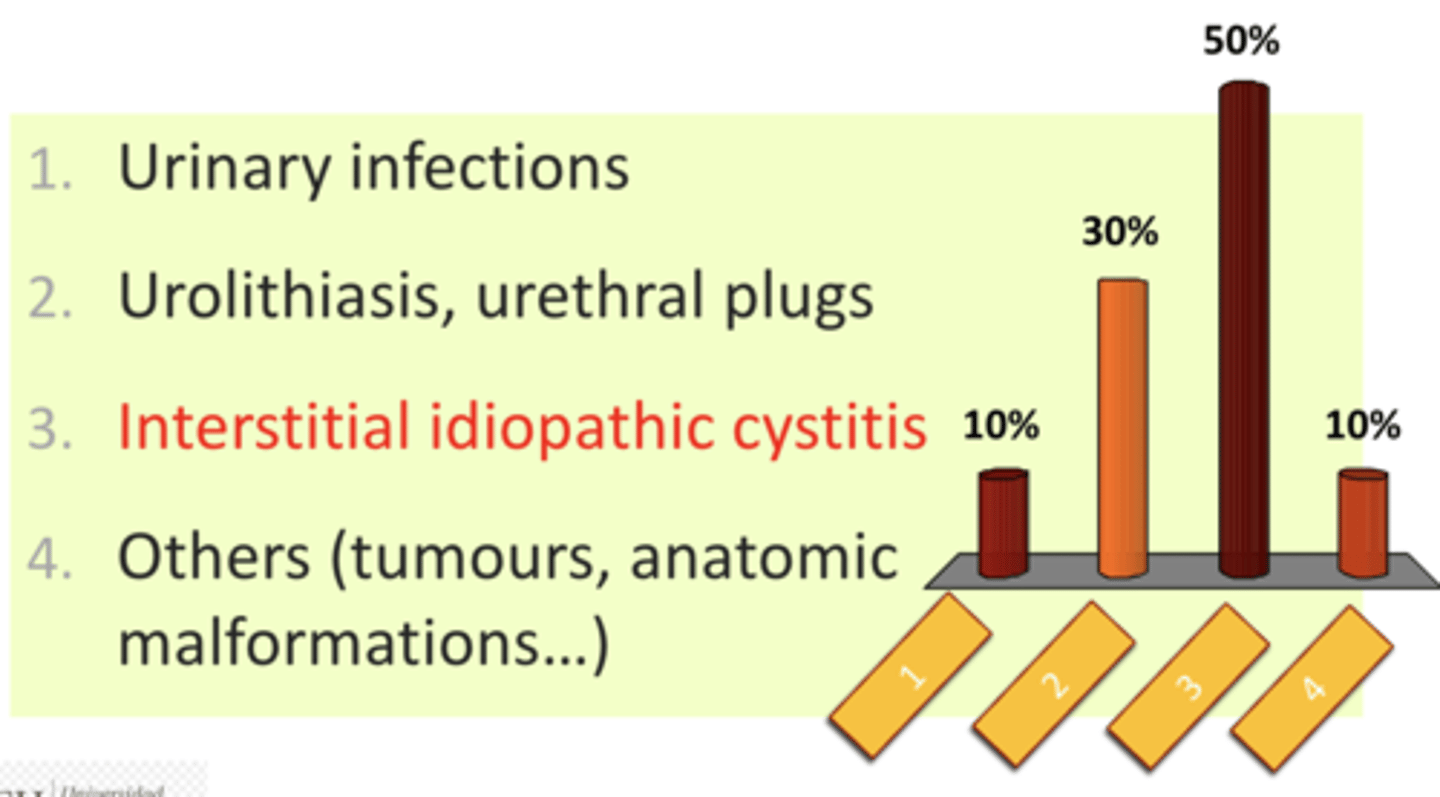
if we see a stressed cat with an inflamed and painful bladder wall, what can we suspect is the diagnosis?
FLUTD
commonly caused by idiopathic feline cystitis, which is mostly caused by stress.
what happens if we culture a urine sample from a cat with idiopathic cystitis?
there will be no bacteria growth, because this inflammation is sterile, and is caused by stress.
what factors predispose a cat to feline idiopathic cystitis?
anything that causes stress:
-poor quality, only dry diet
-little water consumption
-overweight, inactive
-poor condition litter tray
-several cats
-routine change
neutered adult male cats>
what are uroliths?
macroscopic sediment formed by non-soluble crystals
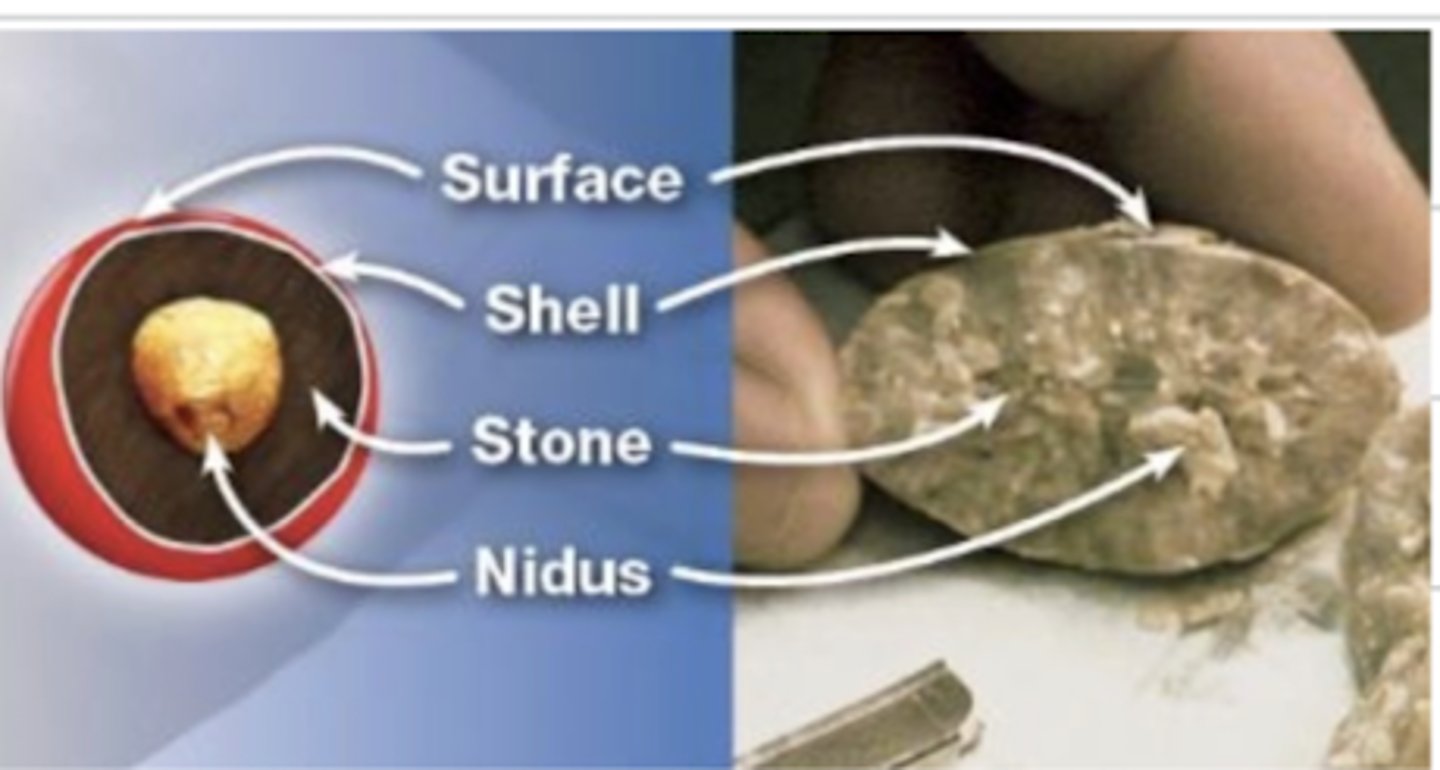
what is the difference between uroliths and urine crystals?
same composition, but uroliths are macroscopic and urine crystals are microscopic
are uroliths more common in dogs or cats?
dogs
where in the urinary tract can uroliths exist?
anywhere, but are most common in the bladder
crystalluria indicates:
hypersaturation of mineral contents in the urine. usually caused by poor diet, although some breeds are predisposed.
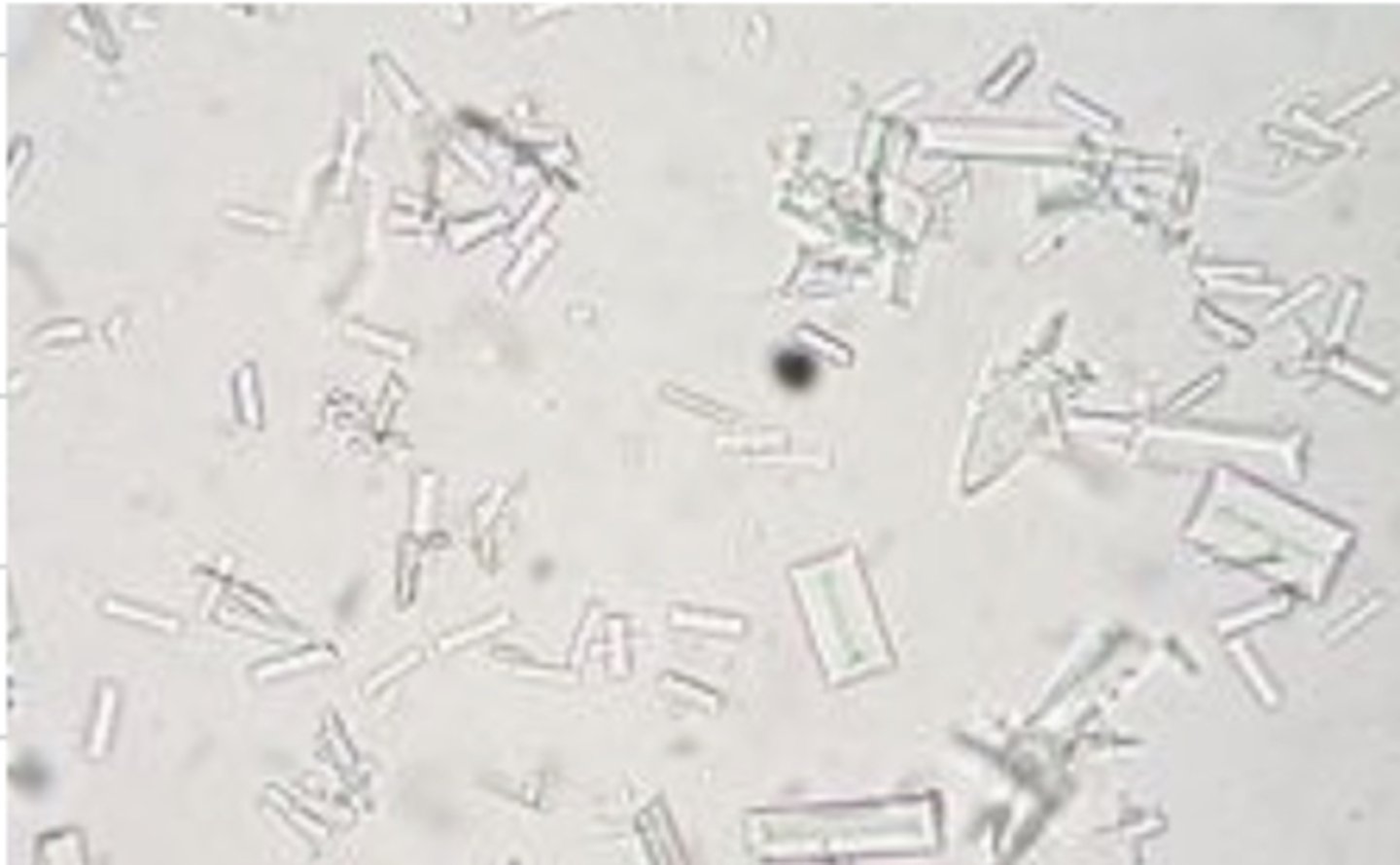
the most common crystals we see in the urine are:
struvite and calcium oxalate
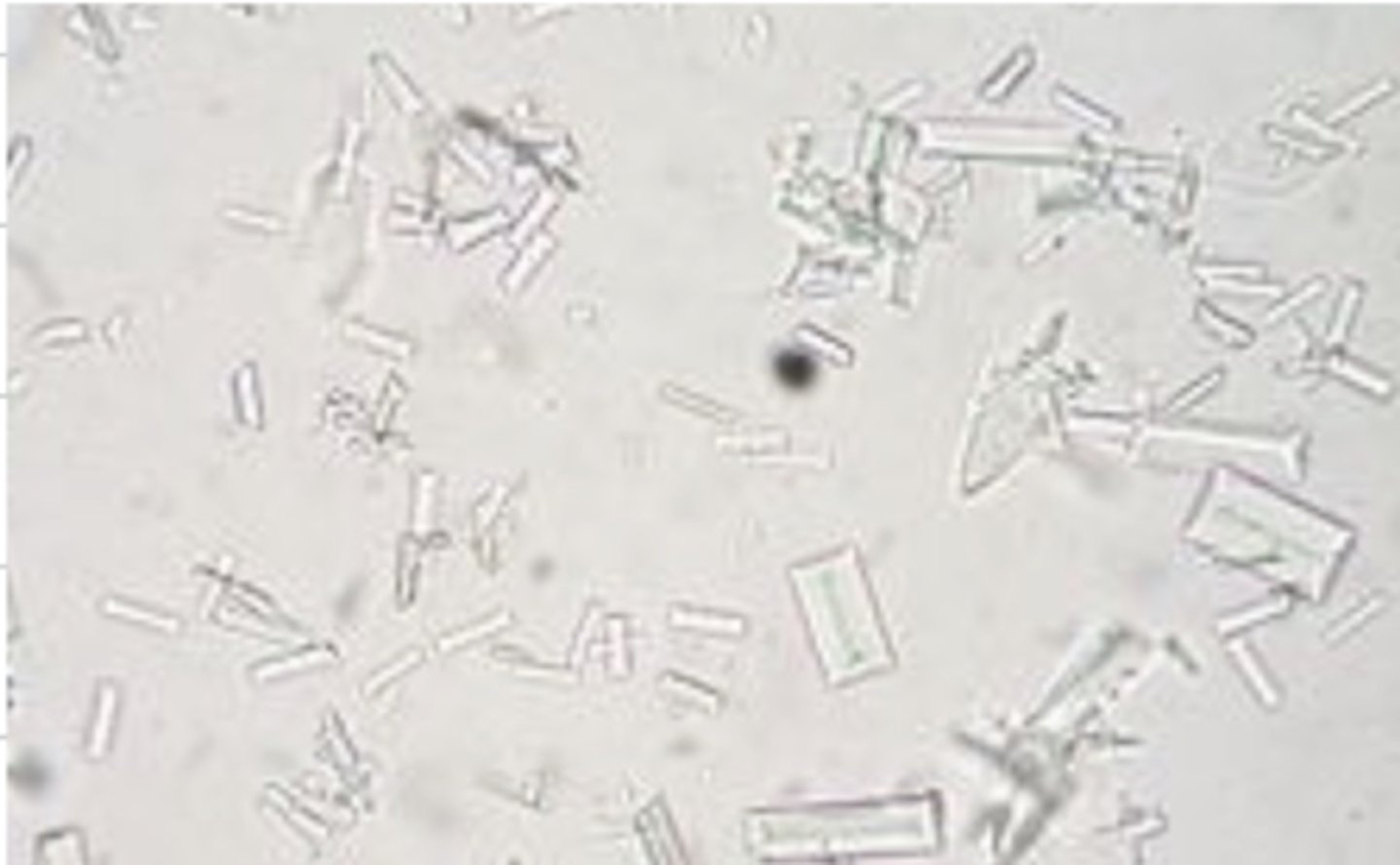
what causes crystalluria?
- poor diet
- breed disposition (small breeds)
- females are predisposed for struvite
- decreased water intake
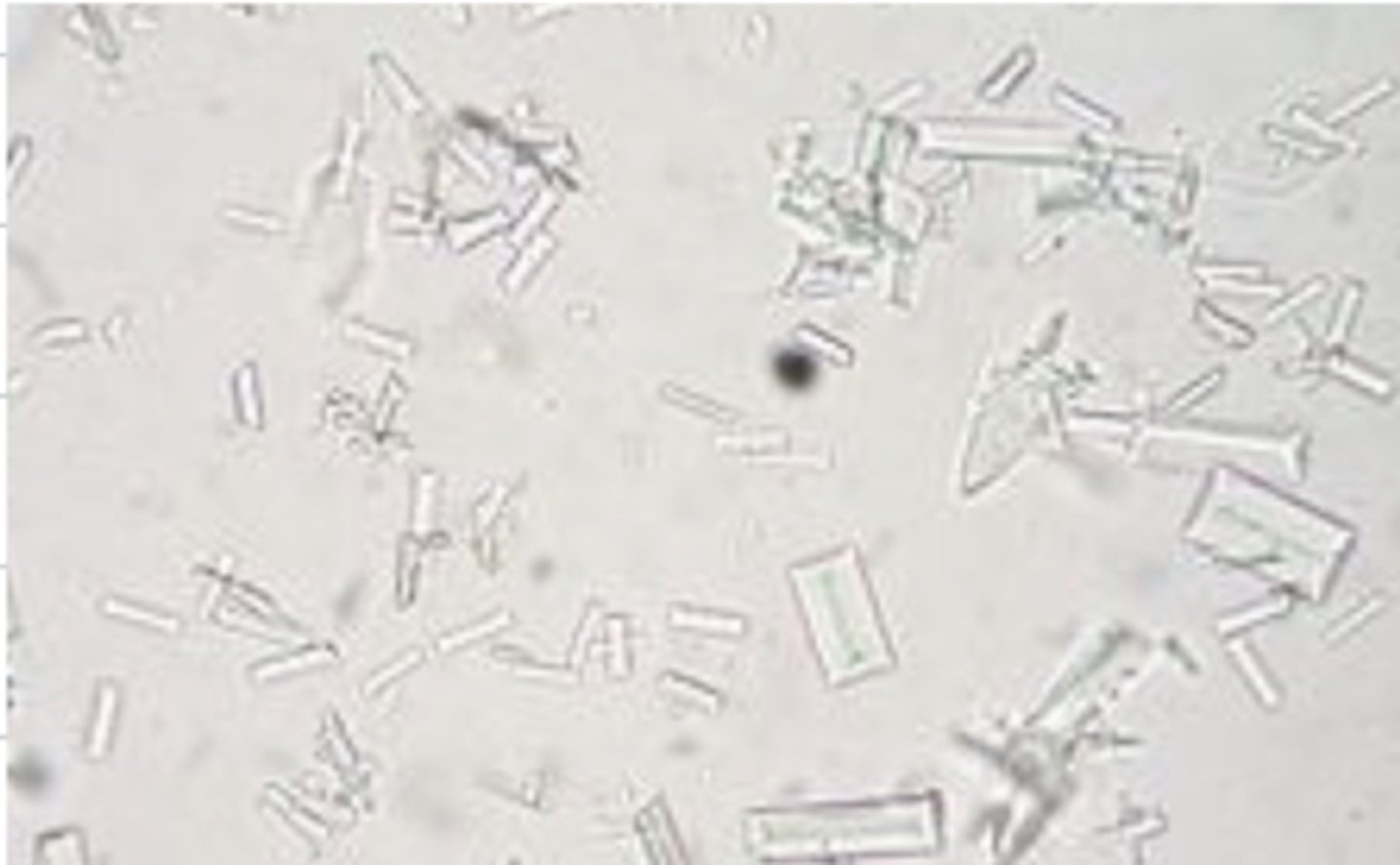
how does the pH change when there is a bacterial infection in the urinary tract?
↑ pH
because the microbial ureases hydrolize the urea into ammonia, which alkalizes the urine.
how do struvite crystals form?
phosphate and ammonium ions of alkaline urine bind with magnesium and form a molecule of magnesium ammonium phosphate
how can we diagnose uroliths?
easiest way is with imaging: xrays and ultrasounds

how can we treat an animal with urolithiasis?
the crystals can dissolve depending on the pH:
-ammonium urate dissolves at ↑ pH
- calcium phosphate dissolves at medium pH
a 4 year old, neutered shorthair cat comes to the vet due to a week of trouble urination, including: straining to urinate, pain when urinating, urinating more frequently, blood with urine. he is also eating less than normal.
upon the physical exam, we find tachycardia, dehydration, and hyperventilation. he is very overweight.
what are the names for these clinical signs?
what is the differential diagnosis?
what tests do we order?
clinical signs:
hematuria
dysuria
stranguria
pollakiuria
hyporexia
differential diagnosis:
FLUTD (can be FIC, urethral plug, urolithiasis, bacterial cystitis)
Anatomical defects
Behavioral problems
tests:
urinalysis
biochemistry
possible xray
the urinalysis of a cat shows:
dark yellow/red urine
cloudy urine
7.5 pH
proteinuria
RBCs
struvite
cats
and the biochemistry shows:
↑ BUN
↑ creatinine
↑ K+
↑ PCV
what do we think is the diagnosis?
check with xray for uroliths.. if there are none, suspect a urethral plug. this is very common and severe in male cats
how should we treat a cat with a urethral plug?
-catheterization of the urethra and flush it with saline to get rid of the blockage
-fluid therapy
-prophylactic antibiotics
-antiinflammatories
-increase water intake
-specific diet to control urine saturation
what is calmurofel?
a neutraceutical used to maintain the glycosaminoglycans of the internal lining of the bladder. it contains glucosamine HCl, chondroitin suftate MPS, and L-tryptophan.
a 6 month old female bulldog comes to the vet because she is not able to control her urination. she is always wet at the perineal area.
what differential diagnosis do we propose?
what additional tests do we want to order?
congenital urinary tract defect
LUTD
xray + excretory urography
the most common signs of an ectopic ureter are:
-urinary incontinence
-perineal dermatitis
